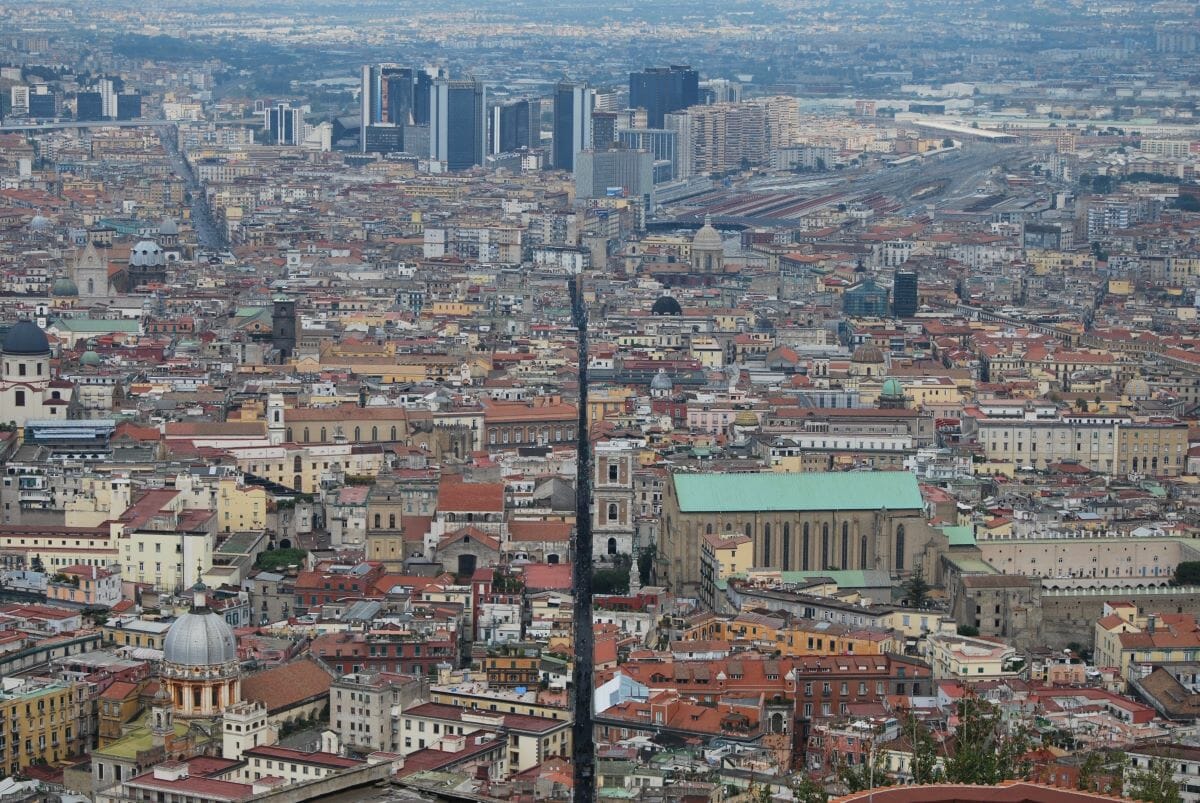
Spaccanapoli Like a Local: The Best Food, Coffee, & Sights
September 25, 2023
One of the most important parts of Naples technically has many names, but everyone just calls it Spaccanapoli.
Why? Spacca means “to split,” and Spaccanapoli literally splits the historical center in two!
The narrow street has its ancient roots in the Greek era of the city. It was one of the original decumani, or east-west streets, from when Naples was a colony called Neapolis. This street—that has witnessed the rise and fall of empires—is located within the Historic Center of Naples, which is a UNESCO World Heritage Site.
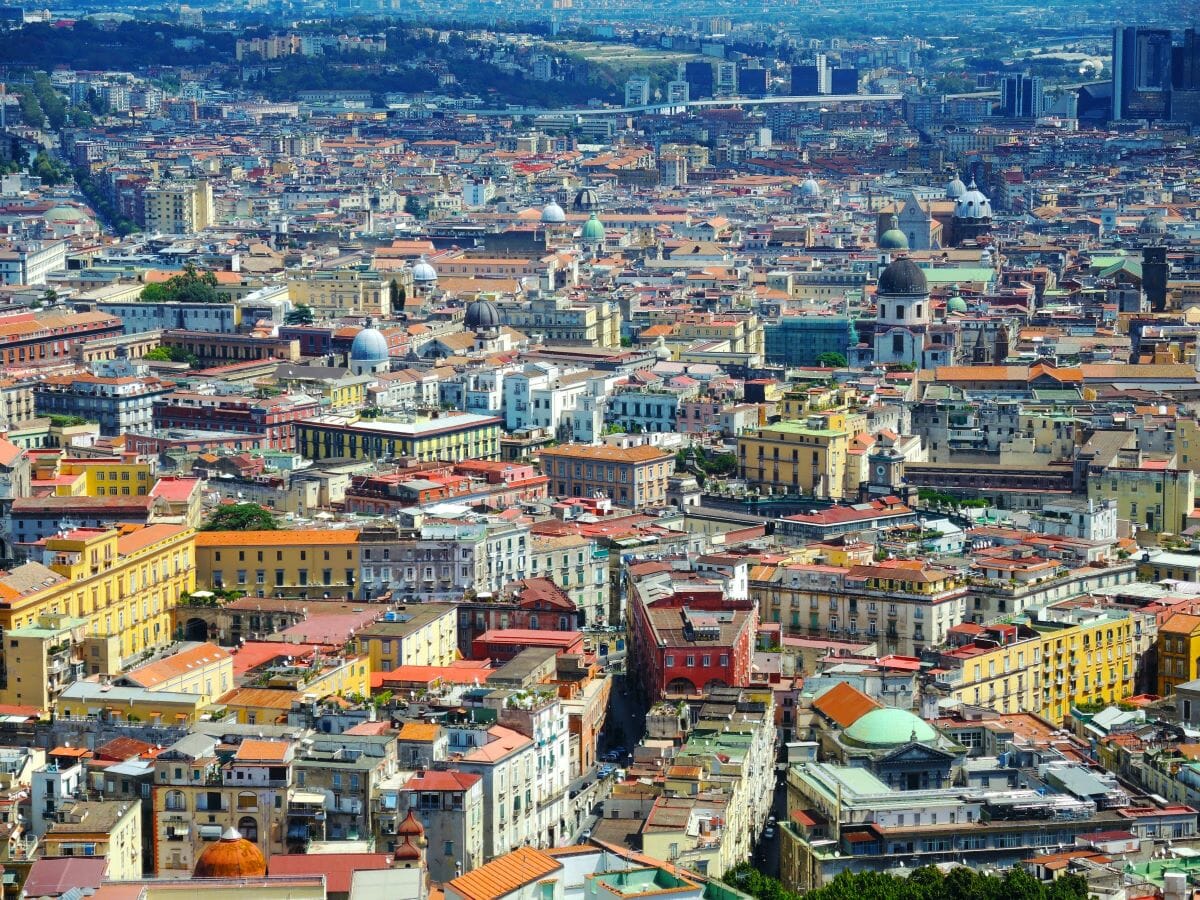
Visting Naples? A must. Visting Spaccanapoli? Also a must. Photo credit: Montse Monmo
It’s dense with delicious food, ornate churches, and hidden history. Read on to experience it like a local!
Table of Contents
ToggleA bird’s eye view of Naples
Walk to the top of the street to the church of Santa Maria ogni Bene ai Sette Dolori (say that five times fast!) to admire the street from its starting point. The sight of the narrow street stretching as far as the eye can see is striking. But if you want to really get the full impact, take the central funicular up one stop and walk down Corso Vittorio Emanuele. From that vantage point you can really see the contrast between labyrinthian Naples and ruler-straight Spaccanapoli, the trusty little compass that has withstood the millenia.
Insider’s tip: For the best view, head to Corso Vittorio Emanuele, 347.
Spooky Spaccanapoli: Skeletons in the…churches?
If you love all things spooky, check out the Chiesa del Gesù Nuovo (Piazza del Gesù Nuovo, 2) and Santa Luciella.
Chiesa del Gesù Nuovo
The magnificent Chiesa del Gesù Nuovo (and yes, it truly is magnificent) features a wall in the far left corner adorned with saintly skulls and bones. This part of the church dates back to the 17th century and holds 35 busts, each housing its own relic box containing remains of the original Christian martyrs.
Chiesa di Santa Luciella ai Librai
The church Chiesa di Santa Luciella ai Librai is a tiny church that was abandoned for 30 years and only reopened in 2019. In the lower level of the church you can visit a special skull that Neapolitans prayed to from the beginning of the 1900s onwards. The skull has a deformity that creates the illusion of ears! Whisper your wishes to join the local tradition. Underground, you can also see a cross-section of all the different levels of the street, like a layered stone tiramisù. It provides a striking visual representation of the city through the paving stones—the Greek era, the Roman era, the medieval era, and the modern era street, all stacked on top of each other.
Where to drink coffee on Spaccanapoli
Naples’ coffee culture is very important, and Spaccanapoli has some amazing places to get your fix. Caffetteria Mexico (Via Domenico Capitelli, 11) is a favorite of many locals, brewing Passalacqua coffee from a local roastery. Cuccuma caffè uses a traditional brewing method that the bartenders are happy to explain to their customers. Palazzo Venezia has a wonderfully lush courtyard hidden up a flight of stairs where you can relax away from the chaotic streets.
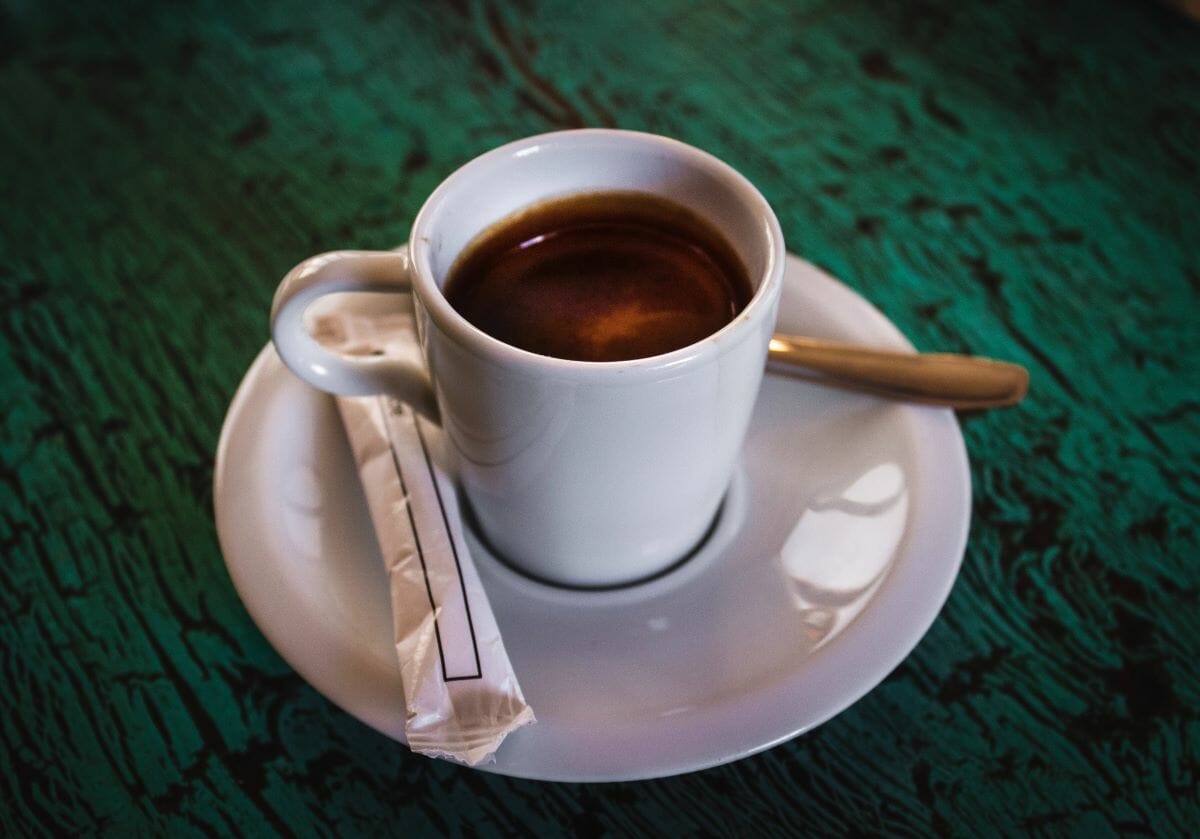
Italians take their coffee very seriously. Photo credit: Louis Hansel
Where to eat on Spaccanapoli
There’s no shortage of great food on Spaccanapoli. Many of the best street food spots are on or near Spaccanapoli. You can sample taralli napoletani at Taralleria Napoletana, great mozzarella at Pan’ E Muzzarell’ (Via Domenico Capitelli, 14), and freshly fried food at Il Cuoppo.
For a hyper local lunch, stop at Spiedo d’Oro, one of the best tavola calda style places in the city. It’s a great and affordable option for a filling lunch. If they offer the genovese, we suggest trying it. It’s beef and onions cooked slowly until they become tender, and you can enjoy it as a pasta sauce or a hearty secondo dish.
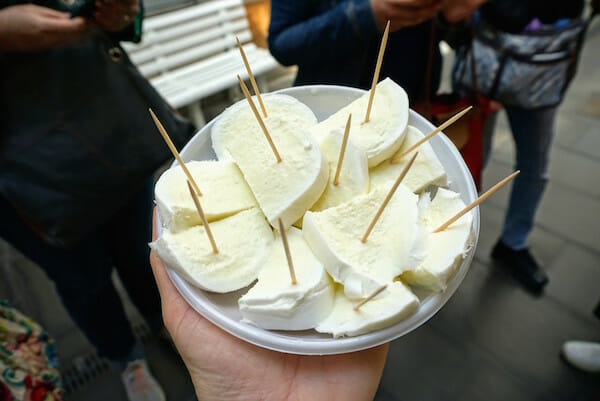
Spaccanapoli is full of delicious treats to try.
Insider’s tip: A tavola calda is a small trattoria or bar that prepares traditional dishes fresh for lunch every day. The dishes are presented in a buffet style (although not self-serve), and busy Neapolitans who don’t have lunch at home frequently opt for a meal here.
Cuccuma caffè—in addition to their fantastic coffee—serves an epic spaghetti lunch. Each table agrees on one spaghetti dish which then comes served on a massive communal plate, with accompanying small plates for each person to eat their portion. To order, you tell the waiter how many grams of pasta you want (and make sure you order enough for everyone!).
Palazzo Petrucci in Piazza San Domenico Maggiore is a gourmet pizzeria with seasonal flavors like grilled pumpkin and pancetta. They also have a great tagliere, or selection of local cold cuts and cheeses that they serve with warm focaccia with a hint of parmesan. They have outdoor seating right in the piazza and a terrace on the roof for an even better view.
Trattoria Don Vincenzo is a little traditional trattoria with high quality Neapolitan fare. It offers weeknight dinner, Friday and Saturday lunch and dinner, and Sunday lunch. Situated in a tiny piazza, you can soak in the vibrancy of Spaccanapoli without being overcrowded. It’s even right next to a local winery if you feel like a pre- or post-meal glass!
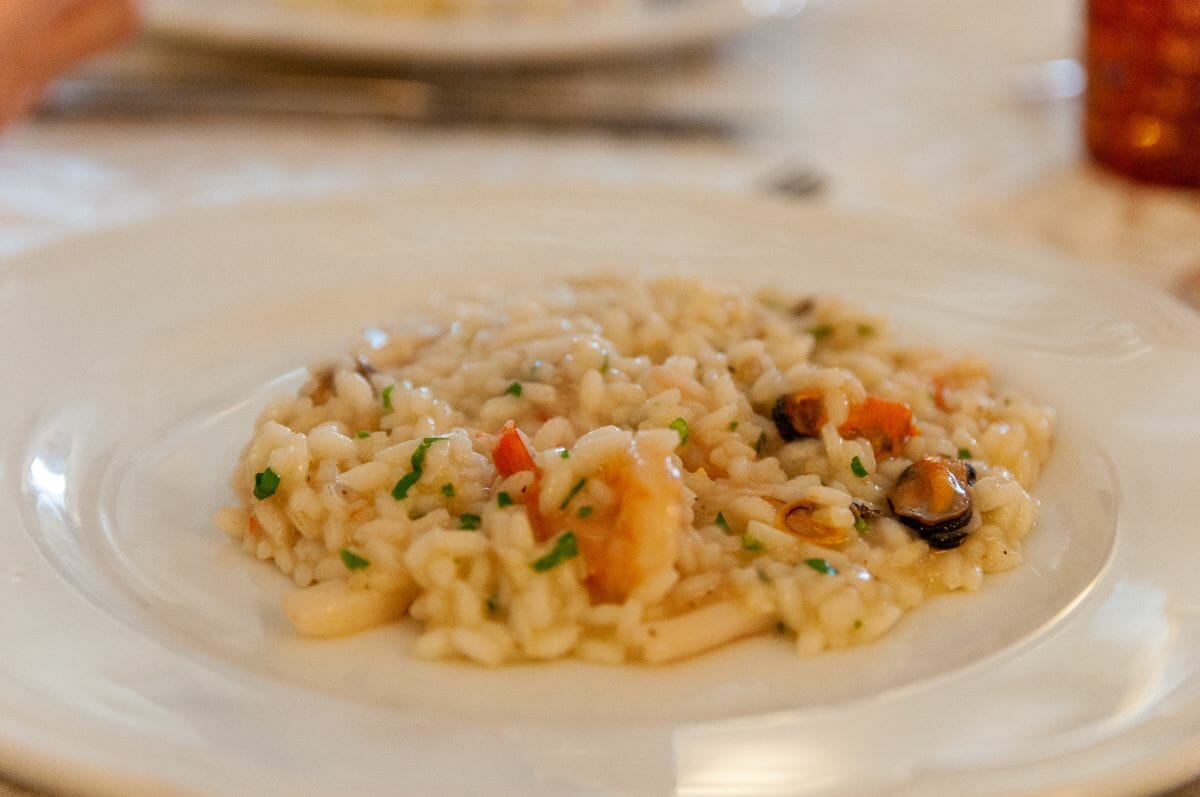
We love a good risotto while in Italy. Photo credit: Marika Sartori
Year-round Christmas in San Gregorio Armeno
Neapolitans are serious about their nativity scenes, called presepe. Mentions of presepe can be traced all the way back to the 1300s, but the art form of the presepe really took off in the 1700s. Noble and wealthy families would compete to have the most elaborate scenes, sometimes with hundreds of tiny figurines. Nativity scenes in Neapolitan cultures are not just about Jesus. They often portray an entire village, with different tradespeople representing different months of the year.
Nowhere else is the culture of the presepe more evident than Via San Gregorio Armeno. Cutting between Spaccanapoli and Via dei Tribunali, the razor-thin street is packed with artisan shops selling figurines and other materials for presepe. Tourists and Neapolitans alike flock to the unique street to see the handiwork of local artists and electric presepe with moving figurines!
San Gennaro street art
Graffiti is ubiquitous in this city, but recently many local artists have started elevating street art in Naples to a new level. One of the most breathtaking pieces of street art is on Via Duomo. It depicts the patron saint of the city, San Gennaro, and was painted by artist Ciro Cerullo (under the pseudonym Jorit). The politically active artist has painted hyper-realistic large-scale portraits all over the world, but many of his works are in Naples. The massive San Gennaro gazes out and above the city, an ancient symbol made modern.
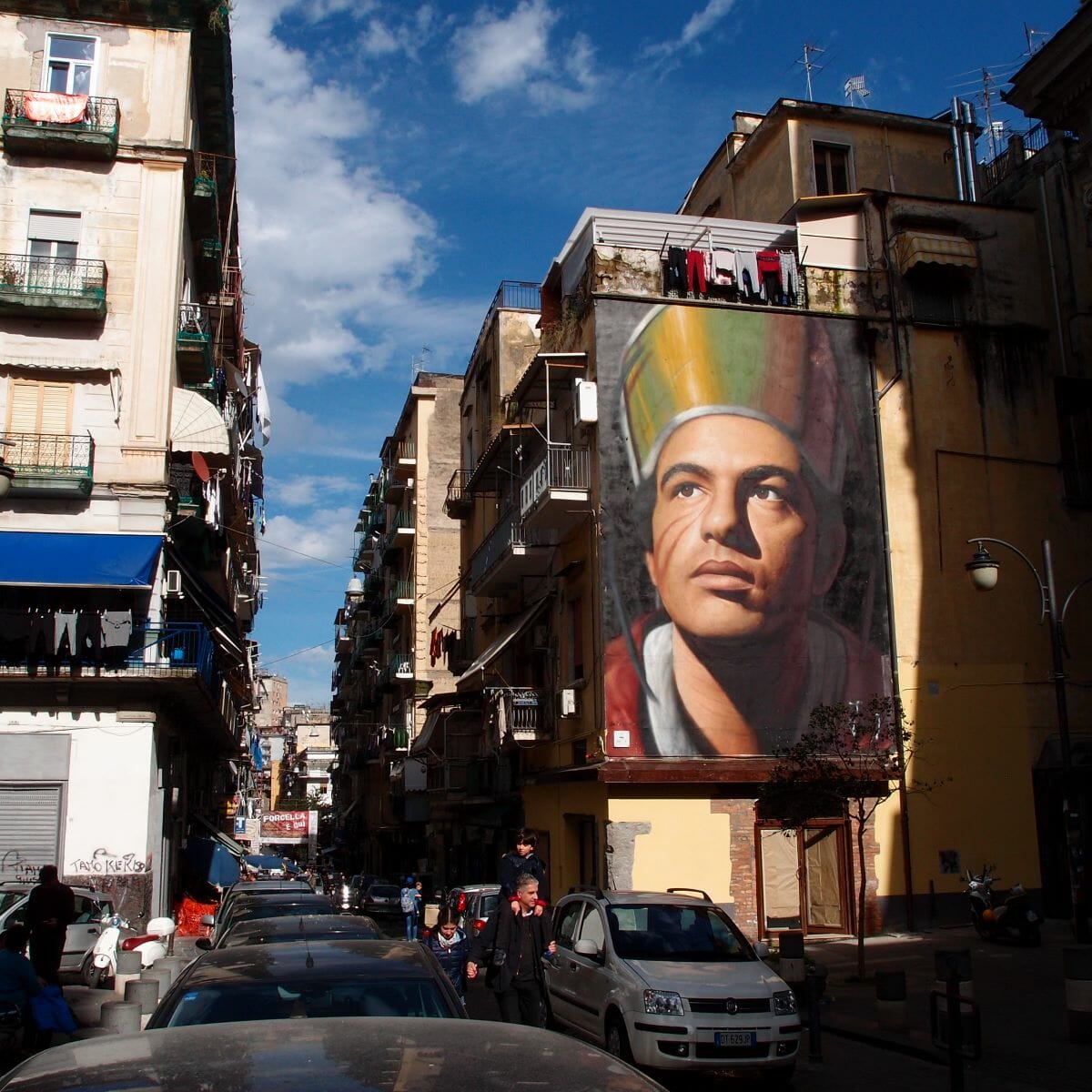
Jorit is one of Italy’s most famous street artists. Photo credit: paolodiceva
–
Spaccanapoli is a street with many names, millennia of history, and dozens of activities for the whole family. The tiny street with a big personality awaits you! If you’re looking for more adventure, check out our self-guided Naples walking tour for other must-see Naples spots.
by Chelsea Newman
View more by Chelsea ›Book a Tour

Pristine Sistine - The Chapel at its Best
€89
1794 reviews

Premium Colosseum Tour with Roman Forum Palatine Hill
€56
850 reviews

Pasta-Making Class: Cook, Dine Drink Wine with a Local Chef
€64
121 reviews

Crypts, Bones Catacombs: Underground Tour of Rome
€69
401 reviews

VIP Doge's Palace Secret Passages Tour
€79
18 reviews

Legendary Venice: St. Mark's Basilica, Terrace Doge's Palace
€69
286 reviews









